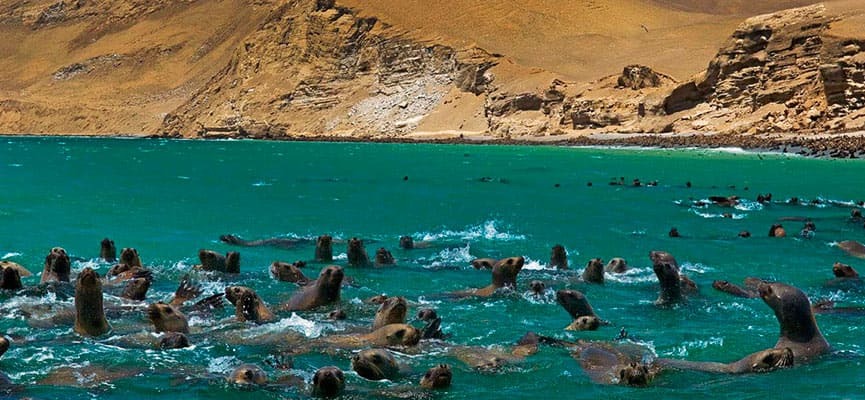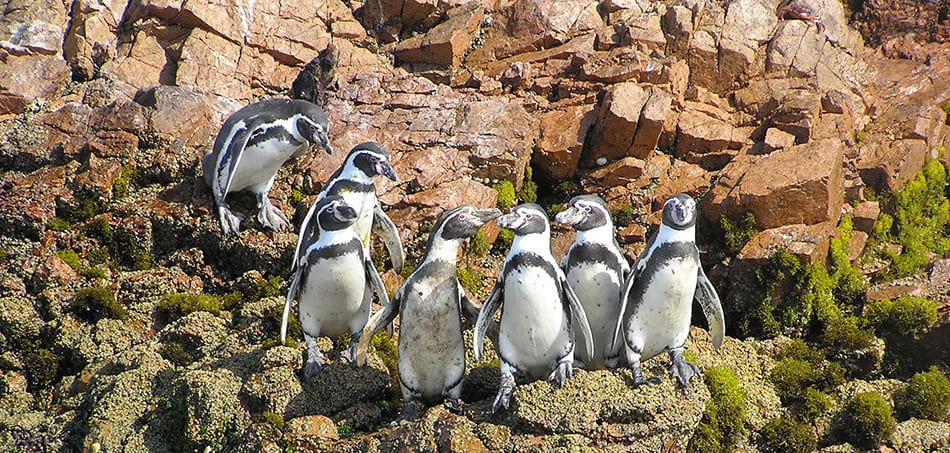
The Paracas National Reserve is the second protected natural area in the Ica region, together with Punta San Juan of the National Reserve of Islands, Islets, and Puntas Guaneras, and is part of the 25 that, so far, are suitable to receive visitors with all biosafety protocols, within the framework of the Naturally safe campaign promoted by the Ministry of the Environment and the National Service of Natural Areas Protected by the State (Sernanp).
Located 250 kilometers south of Lima, the Paracas National Reserve was created as a natural area protected by the State, on September 25, 1975, to protect representative samples of marine-coastal ecosystems, thus becoming the first of its kind in the country.
This protected natural area has a total area of 335,000 hectares and is home to around 1,500 species of animals, including 216 types of resident and migratory birds, 36 mammals, 10 reptiles, and 168 fish. They include, for example, turtles, whales, shorebirds, sea lions, Humboldt penguins, otters, and dolphins, among other emblematic species.
* Reference schedule
Camera, warm weather clothing, cap, coat, cash.
min. 23 / max .: 32
2 ms. n. m. (city of Paracas)
*Pricetag
The dominant species are Calidris alba, Calidris mauri, Calidris pusilla, and Pluvialis squatarola.
Aerial surveys carried out by the Canadian Wildlife Service (1985) report about 7,700 Calidris alba (8.1% of the population of the Pacific coast) in the reserve. There are tens of thousands of shorebirds that feed about 15 kilometers north of the mouth of the Pisco River and spend the night within the limits of the reserve. These birds are not included in any of the diurnal censuses mentioned above. But, if the total number of shorebirds reported for the Paracas reserve is included; around 100,000 individuals would be reached.
The Paracas National Reserve is the most important point along the Peruvian coast for many species of mammals. It includes two species of seals, 160 species of birds, and numerous fish and shellfish. It also houses large colonies of guano birds.

As we mentioned, Paracas has a very relaxing vibe and you will feel it, even more, when you appreciate the sunset. Grab a couple of beers at the oceanfront restaurants and enjoy the view.
The city has expanded a lot over the last few years as new hotel complexes were opened to provide accommodation and increase tourist services, but the local beauty has not been affected by what the change has been for the better.
Paracas is perfect for all types of travelers. With its relaxing vibes, this beach town has a surprising variety of activities to choose from. The Paracas National Reserve is one of the main attractions. It is the oldest marine reserve in Peru and consists of almost 335,000 hectares protected to preserve the coastal marine ecosystem.
You will find many species of birds, most of them on the shores of Paracas Bay resting in the sun. It's a great photo opportunity with the desert and ocean as the background to capture that on film. Just 15 minutes by boat from the Pacific coast begins the Ballestas Islands, also known as the Peruvian Galapagos. With a Tour to the Ballestas Islands, you will see a representative sample of animals such as sea lions or the Humboldt penguins in their natural habitat just a step away from the coast! Knowing Las Ballestas is something that all nature lovers must do since it is home to thousands of birds and mammals.
The Islands are protected natural areas, which means that you cannot swim with the animals or walk on the rock formation, but you will be able to get close to them on the boat.
Tourist circuit

Visiting the Paracas National Reserve allows you to appreciate beautiful beaches such as Yumaque and La Mina, covered with fine sand, and feel the sound and force of the Paracas winds. The name Paracas means, precisely, "Sand Wind" and gave its name to one of the most important cultures on the Peruvian coast.
Since February 2017, the new tourist infrastructure in the Paracas National Reserve has been in operation, built by the Ministry of Foreign Trade and Tourism (Mincetur). The Plaza Adjacent to the Interpretation Center stands out, which has iconographies of the Nasca and Paracas cultures, which is accessed by a path from the parking area. It also has an area of ​​informational totems.
Another important sectors are the Santo Domingo checkpoint, intended for the tourist orientation service. To appreciate the charming coastal seascape, you can go to the Santa María, La Catedral, Playa Roja, Lagunillas, Yumaque, and Playa Supay viewpoints, where the tourist circuit ends.
Paracas is located 4 hours from Lima, in the Province of Pisco, Department of Ica. Several bus companies make the route from Lima to Paracas.
The only problem is the headache it will give you when trying to compare prices, choose the one that suits you best and find the bus stations since there is no central station.